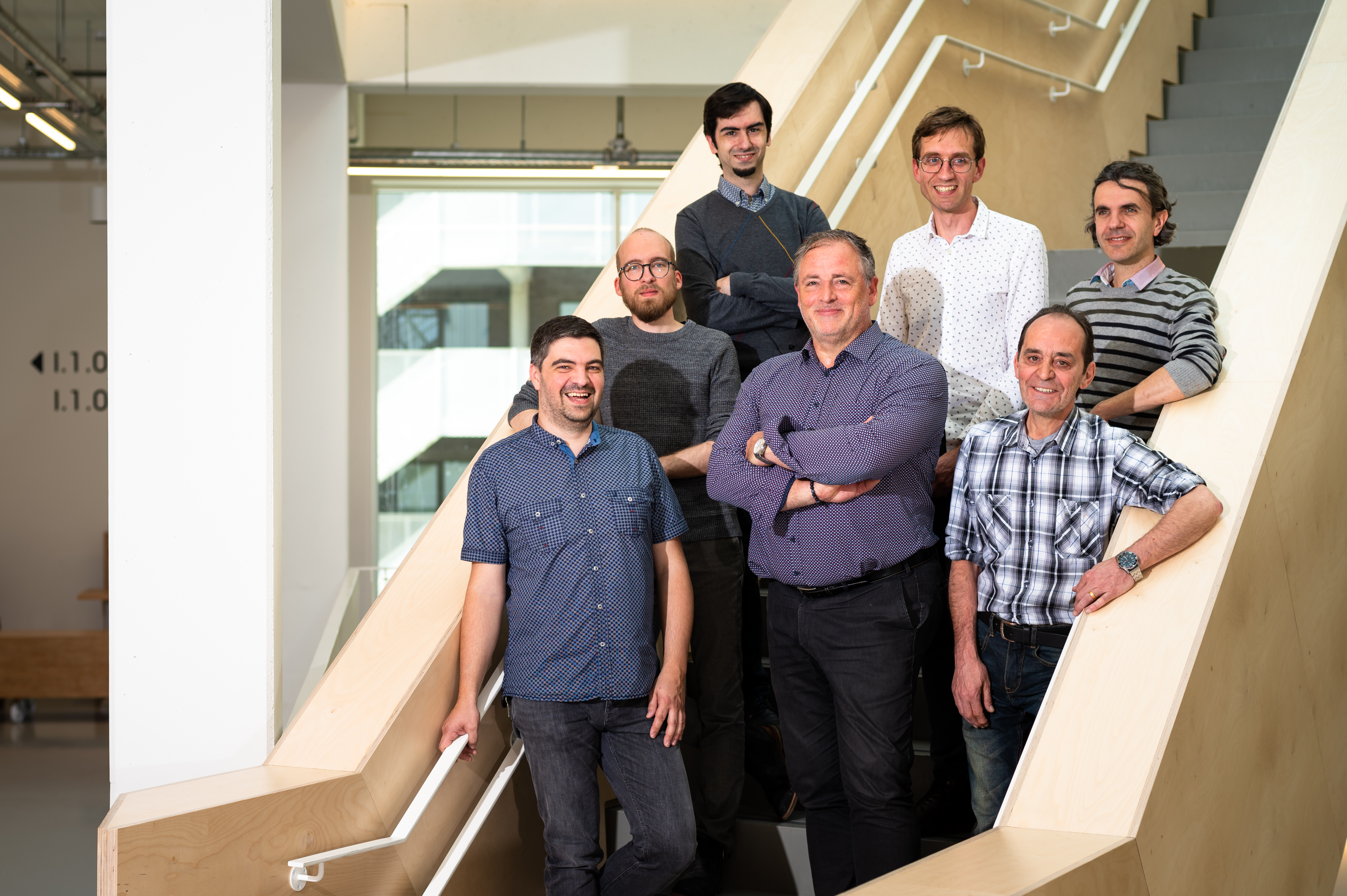At the heart of the VUB Main Campus, building G houses the brand new data centre. Measuring 100 square metres inside, and with more space outside, it’s a powerful collaboration between the Infrastructure and ICT departments. “We have laid the foundations for the further digitalisation of both education and research, and of operations themselves,” says chief information officer Henri Vanroelen.
Two years ago, the decision was made to build a new data centre to replace the existing, outdated infrastructure on the Solbosch campus, which dates back to the 1970s. “When the tram passes by, the building shakes,” says ICT project manager Steven Opstaele. “VUB and ULB decided to go their separate ways, except when it comes to software. Building G has always been the back-up for Solbosch. Now it’s the other way around.”
Continue reading below the video.
And this is not the final phase. When the Green Energy Park in Zellik is ready, that will become the primary data centre and Building G will serve as a back-up. It’s expected to be operational in the academic year 2024-2025. But this is already a first big step towards digitalisation.
“With the renovation and expansion of the data centre on the Etterbeek campus, we are already achieving a number of milestones and goals,” says Vanroelen. “For example, for the first time in the VUB’s history, we have a super computer (HPC) on campus and a data centre that can continue to operate via its own generator, even if the electricity is completely cut off. That’s important in the context of reliability and continuity of the IT environment, which has become indispensable for the university’s day-to-day operations. Looking to the future, with the data centre we have laid the foundations for the further digitalisation of both education and research, as well as of the operations themselves.”
Continue reading below the picture.
The added value of a new data centre
“It’s important for the data centre itself and the entire campus to connect with the internet,” explains Opstaele. “All the small server rooms scattered around the campus are moving to a central location. Many machines are still under desks, without gas extinguishers or sealing. By collecting them in one place, we can protect sensitive data much better.”
In addition, it is tailored to today’s working conditions. “Everyone wants to be able to work from any workstation. VUB is going for flex desks and an adapted network depending on where the user is located. We want to offer that, but it’s only possible if we separate the users from the servers. For example, you will then be able to print from any printer using your staff card.”
Safety first
The data centre is fully occupied by equipment, not by employees. “There’s an emergency generator that keeps working 24/7 even if the whole campus were to be without electricity,” says Opstaele. “That’s a very big step forward. In Jette, it already existed because the hospital needed it and the university could easily tap into it.”
You don’t just walk into the new data centre. There is access control, a security system, cameras and alarms. A gas extinguisher prevents fire without damaging the internal data infrastructure. The ICT department determines who can enter. In the past, this was done with a key, but now access is granted via staff badges.
Continue reading below the picture.
A step towards sustainability
Ronny Janssens of the Infrastructure Department led the project and was responsible, among other things, for ordering all the materials. “There was a very long delivery time for the pressurised cabin. It’s the first time such an installation has been set up in Belgium,” he explains. The impressive installation had to come from China.
That’s not necessarily the most sustainable option, but it is the safest and the best. “The diesel generator that takes over if the power goes out doesn’t seem so sustainable at first, either,” says Janssens. “However, test reports show that the need to start up frequently is very low, as the basic system has failed for a long period of time no more than three times a year in the past. We only start it up once a month for 15 minutes to test that it works. That is indeed sustainable, and in any case it’s necessary to achieve voltage continuity for the data centre.”
According to Opstaele, the data centre is already much more sustainable than all the individual rooms where servers are housed for now. But it can still be improved. “The future Green Energy Park is designed to recover heat. But that’s only possible if your building is equipped for it. You need more technical rooms for that.”
Communication essential
The work has had a big impact, on both infrastructure and the staff in the building. “We had to carry out a lot of structural work to realise the project, such as creating technical rooms at car park level,” says Janssens. “There was a lot of noise and dust. Although we tried to minimise the nuisance, it wasn’t always pleasant for staff in the area. Normally we would always know immediately who to contact and keep informed about the works, but because of Covid it’s been a bit more difficult. Eventually, after a while, we knew who the points of contact were among the professors, and communication was smooth. For example, it was important to take into account the occupation of the premises in the building during the exam period.”
Great collaboration
The huge project, representing an investment of some €2.7 million, is a collaboration between the Infrastructure and ICT teams. “We were all facing in the same direction and had the same goal,” says Opstaele. “It’s a great example of how we can achieve something together. It also means researchers can focus on their research and be less concerned with IT matters.”
Janssens: “I think people can be satisfied with the new data infrastructure, which offers very high reliability.”
